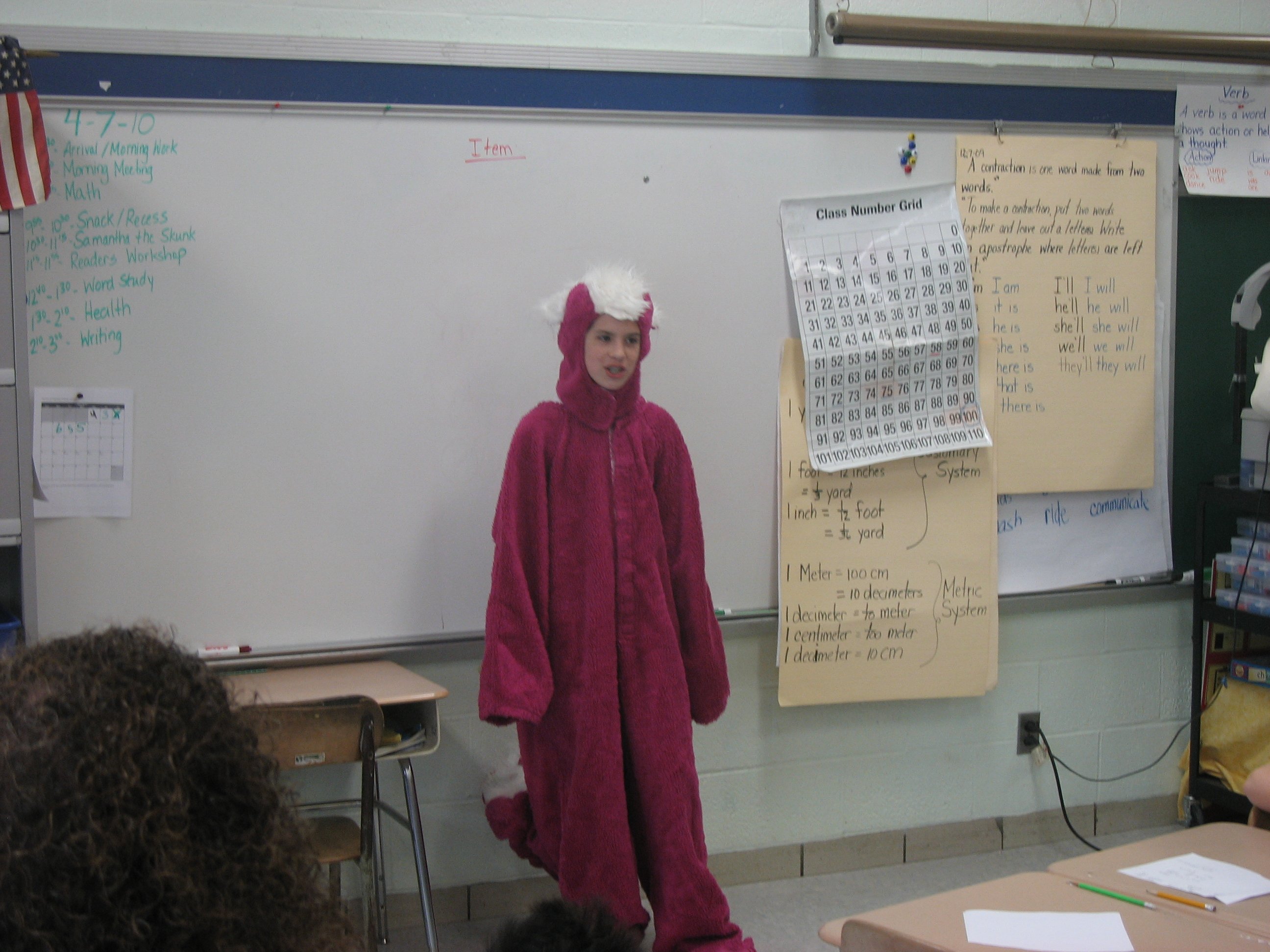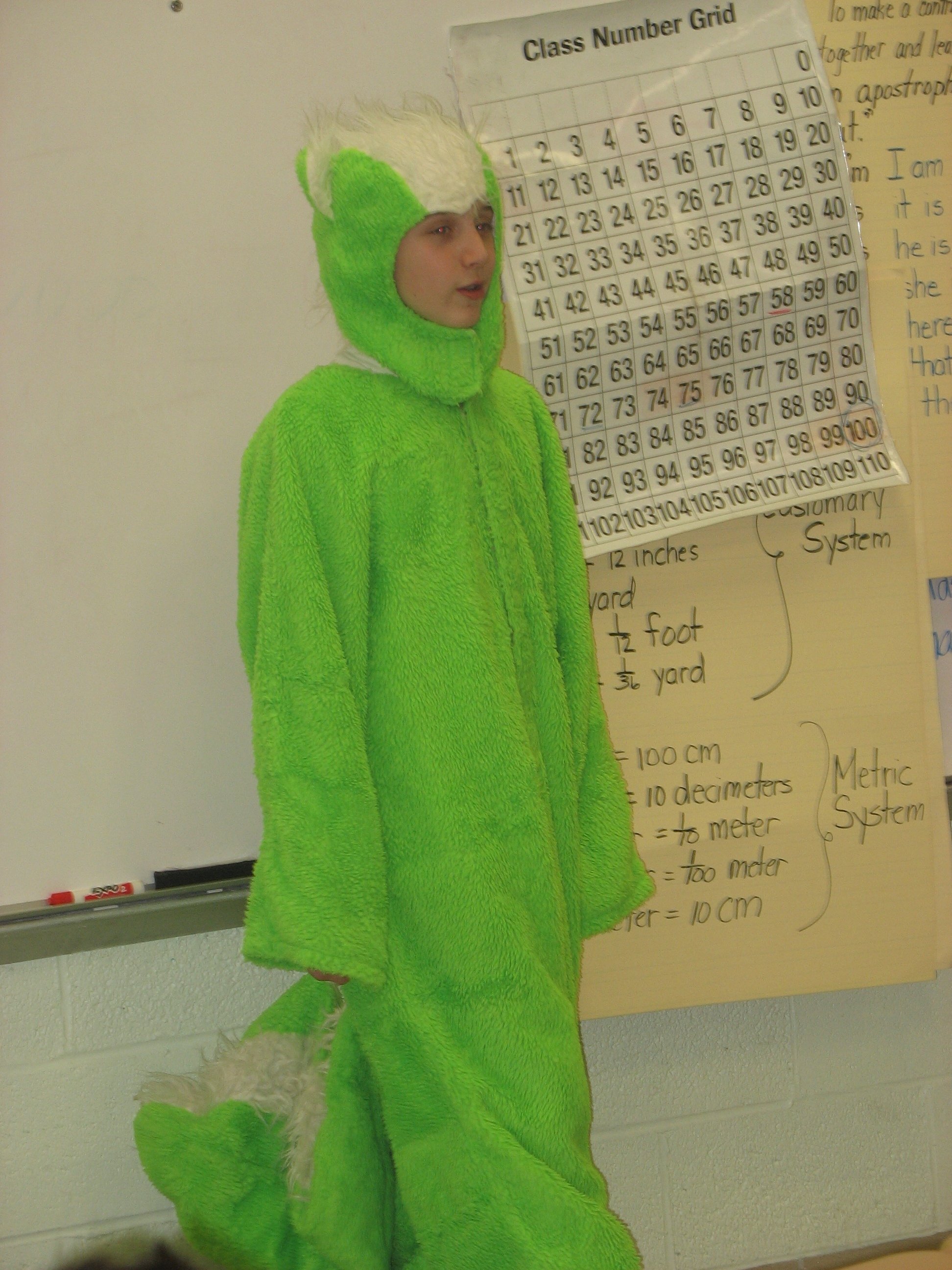The Samantha Skunk Program "The tale of Samantha Skunk: Why Smoking Stinks" is a program that brings student leaders / presenters to classrooms as a lovable magenta skunk. Through the costume character Samantha Skunk, and Solomon the fish (a large action puppet), a team of 3 or 4 students conveys the story of how Samantha tries smoking. After smoking, Samantha changes color from her "unique" magenta color to green. 
As the story progresses, Samantha turns back to her beautiful magenta color with the assistance of Solomon the fish and by promising to "never smoke again". An audience participation element is added to the presentation when the student-narrator periodically asks the class: "What do we know about smoking?" To which half the class answers "Smoking stinks" and the other half replies "like camel's breath!!!" In Dover, this presentation is provided to second grade students in individual classrooms or as assemblies. A third grade audience is probably the effective upper age range. The underlying strategy is one of social disapproval (smoking is yucky) as opposed to focusing on the cancer and health-related issues that are emphasized when students are older. |
Youth to Youth students are trained in Dover to present the story. Total presentation time runs about 30-35 minutes depending upon the extent of questions and answers provided for at the conclusion of the presentation (recommended). Our student presenters for Samantha Skunk are generally in middle school but we have effectively used high school presenters as well. Samantha Skunk was created by Professor of Business, William Scott at the University of New Hampshire. He was inspired to create Samantha as a "no smoking" symbol by his daughter who suffers from asthma. More information on the program and the cost to purchase materials is available from the official Samantha Skunk web site at: http://samanthaskunk.com/ 
Training Others to Perform Samantha Skunk Dover Youth to Youth has taught students and adults from other communities to present this program. This is done in a hands-on interactive fashion, where the trainees are assigned various parts and perform the lesson in a mock situation with no audience. A two-hour block is recommended for initial training, and this is sufficientprovided adult staff from the receiving organization participate and can supervise follow-up rehearsals | 
